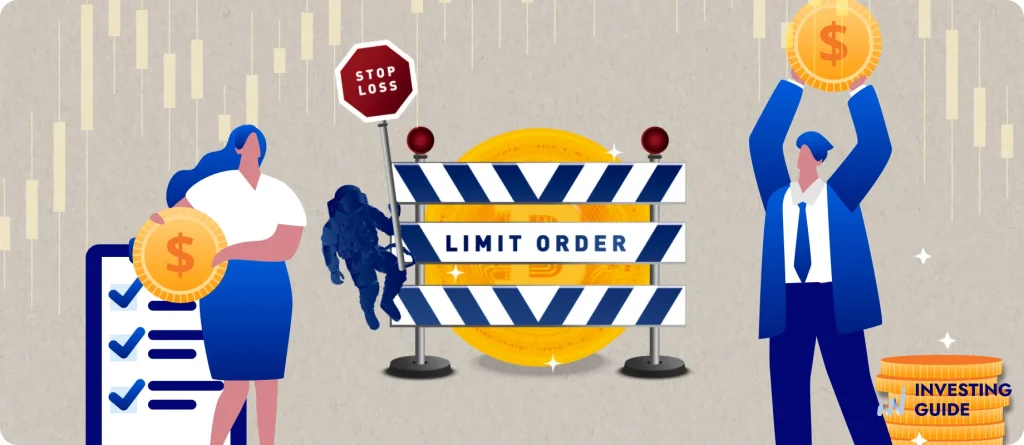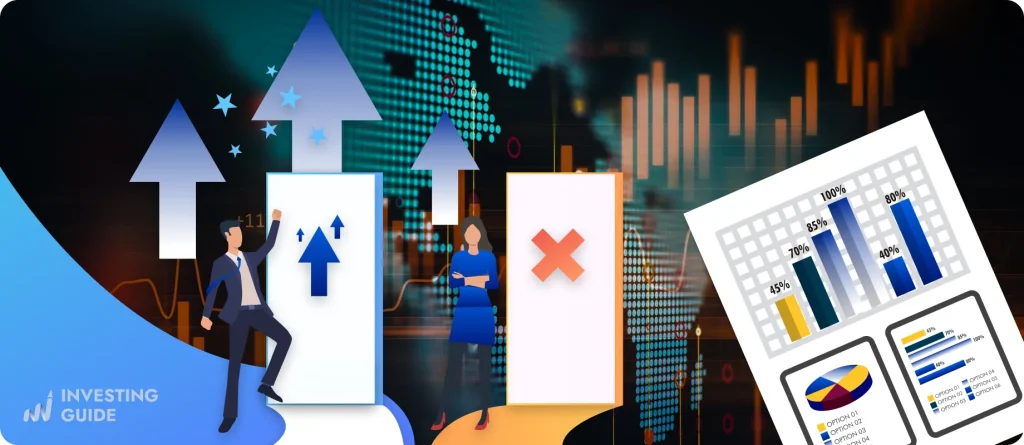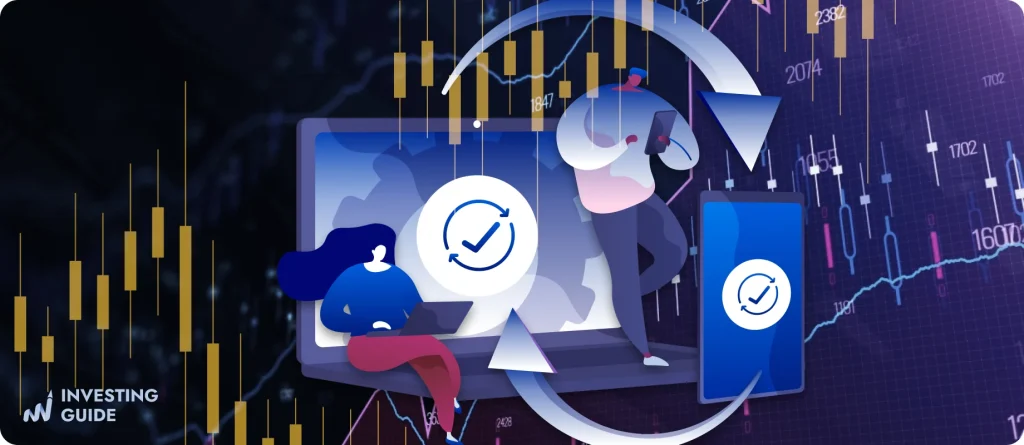Yulia Pavliuk is a financial content writer with a background in language, education, and clear communication. She creates SEO-friendly articles that make complex finance topics like ETFs and forex signals clear and accessible, with a strong focus on UK audiences.
We may receive compensation from our partners for placement of their products or services, which helps to maintain our site. We may also receive compensation if you click on certain links posted on our site. While compensation arrangements may affect the order, position or placement of product information, it doesn’t influence our assessment of those products.
A stop-limit order gives you more control over your trades by combining two tools: a stop order, which acts as a trigger, and a limit order, which defines the price at which you’re willing to buy or sell. This setup helps manage slippage and adds precision to your entries and exits — especially in fast or unpredictable markets.
In simple terms, you’re instructing your trading platform: “If the price hits a certain level, create a new order — but only execute it within a specific price range.” The stop price activates the order; the limit price defines your acceptable range. This method suits traders who want structure and price control, even if it means the trade might not be executed.
How Stop-Limit Orders Work in Practice

Imagine you’re watching an FTSE 100 stock currently priced at 100p. You believe that if it falls to 95p, it could signal a downward move — but you’re only willing to sell if you can get at least 93p.
To manage this, you set a stop-limit sell order: the stop is placed at 95p, and the limit at 93p. Once the price hits 95p, the platform automatically creates a limit order to sell at 93p. But if the price drops sharply and skips past 93p, the order won’t be filled.
This strategy also applies when entering a trade. For instance, if you’re looking to buy after a breakout above a resistance level — but only within a certain price range — a stop-limit buy order allows you to set both the trigger point and the maximum you’re willing to pay.
Characteristics and Key Functions
Stop-limit orders activate only when your chosen stop price is reached, providing a buffer against early or false signals. Once triggered, they become limit orders — meaning they will only fill at your specified price or better.
This provides more control compared to market orders, which can fill at worse prices during volatility. However, in fast-moving or thin markets, stop-limit orders might not be filled at all.
You can customise how close the stop and limit levels are, depending on the market’s liquidity and how tightly you want to manage execution risk.
Benefits and Limitations

Stop-limit orders offer a valuable level of control, but that control comes with trade-offs. Here’s a clearer look at the pros and cons, especially for those navigating fast-moving or volatile markets.
Benefits:
- Price Control: Your trade only executes within your specified range, helping you avoid poor fills during sudden price jumps.
- Reduced Slippage: Especially during events like earnings announcements or central bank decisions, a stop-limit order helps protect you from selling at too low a price or buying at too high a price.
- Strategic Precision: These orders are ideal for traders using technical setups who want to stick to clearly defined entry and exit points.
Limitations:
- Risk of Non-Execution: If the price moves quickly past your limit after hitting your stop, the trade won’t go through, which could leave you unprotected or out of a good opportunity.
- No Guarantee: Unlike guaranteed stop-loss orders (which often require an extra fee), stop-limit orders only work if the market offers your specified price.
- Not Ideal in Low Liquidity: They may fail during overnight sessions or on thinly traded assets, where large price gaps or limited volume can prevent execution.
In short, stop-limit orders give you more precision, but not certainty. Use them when price matters more than speed, and always ensure they fit within your broader risk strategy. Your capital is at risk.
Stop-Limit vs Stop-Loss
While stop-limit and stop-loss orders may sound similar, they serve different roles in trading. A stop-loss order turns into a market order once it’s triggered, meaning the trade will go through as soon as possible, no matter the price. This ensures execution but can lead to slippage during volatile price swings.
A stop-limit order, on the other hand, gives you greater control over the execution price. Once the stop level is hit, it places a limit order that only executes at the price you’ve specified or better. This helps you avoid unfavourable fills, though it also means the trade might not happen if the market moves past your limit too quickly.
Deciding between the two depends on your trading goals. If securing an exit during fast-moving markets is essential, a stop-loss or guaranteed stop may be the safer choice. But if you prioritise price accuracy and are comfortable with the possibility of a missed trade, a stop-limit order provides more control and refinement.
When to Use Stop-Limit Orders

Stop-limit orders are best suited for structured strategies. They work well when trading around key technical levels, such as breakout points or previous highs and lows. Traders who rely on candlestick patterns or technical setups often favour this order type to prevent emotional trading.
They are also useful when trading in highly liquid instruments — such as major currency pairs or large-cap equities — where the chance of the limit price being filled is higher. In contrast, using them on illiquid assets, such as small-cap shares or exotic currency pairs, increases the likelihood that your trade will be left hanging.
Importantly, stop-limit orders are not ideal during major macroeconomic announcements. In these situations, the risk of a fast-moving market bypassing your limit entirely is high. For events such as Bank of England rate decisions or US payroll data releases, guaranteed stops or even sitting out may be the wiser approach.
How to Practise and Refine Use

Getting comfortable with stop-limit orders takes time and testing. Here’s a simple step-by-step way to practise safely before using them in real trades:
- Use a demo account: Most UK spread betting platforms offer free practice accounts. Start here to try out stop-limit orders without risking real money.
- Test in different market conditions: Try using stop-limit orders during quiet times and busy periods to see how they behave when prices move slowly or quickly.
- Adjust your stop and limit spacing: Experiment with wider and tighter gaps between your stop price and limit price. Note which settings work better for the instruments you trade.
- Keep a trading journal: After each trade, record what happened — where your order triggered, whether it filled, and what the market did next. This helps you spot patterns.
- Review and refine: Over time, you’ll see if you’re placing orders too cautiously or too aggressively. Use this insight to sharpen your approach.
Practicing like this builds experience and confidence. It also helps ensure you’re using stop-limit orders as part of a bigger plan — not guessing or reacting emotionally.
FAQs
They can help manage price entry and exit more precisely, but they do not guarantee execution. For high-risk events, guaranteed stops may offer stronger protection.
Yes. They can be used to enter positions once a price level is breached, but only within a defined price limit. This helps reduce slippage on entry.
The order may not fill. This outcome preserves your price discipline but may result in missed trades. Consider whether execution certainty or price control matters more for your strategy.
Most major platforms do, but the interface and flexibility vary. Review your provider’s features and terms before using complex order types.
Final Thoughts
Stop-limit orders are not for every situation, but they offer a sophisticated layer of control for traders who value price precision over execution certainty. In the dynamic world of spread betting, where leverage can amplify both gains and losses, this level of control can help reduce unnecessary risk.
As with any trading mechanism, the key is to use it with awareness. Know what it can do, and what it can’t. Understand the market environment. And always align it with your broader trading plan.
If you’re just beginning, start slow. Use demos, backtest strategies, and trade only when your setup is clear and backed by reasoning — not by emotion or impatience. Most importantly, remember that the goal isn’t to catch every opportunity. It’s to make smart, calculated decisions that let you stay in the game long enough to grow in skill and confidence.


Solid breakdown. I like how you explain stop-limit orders in simple terms while still covering the pros and cons.